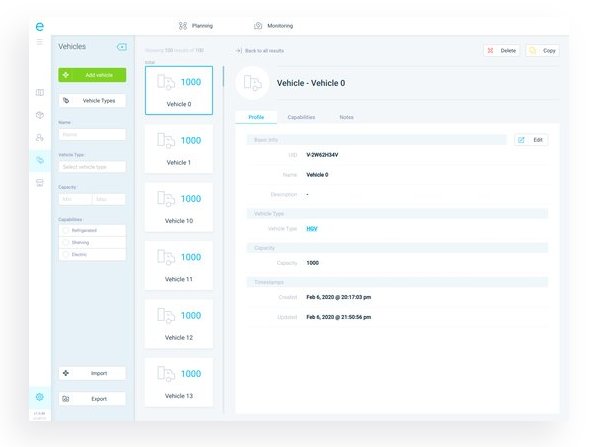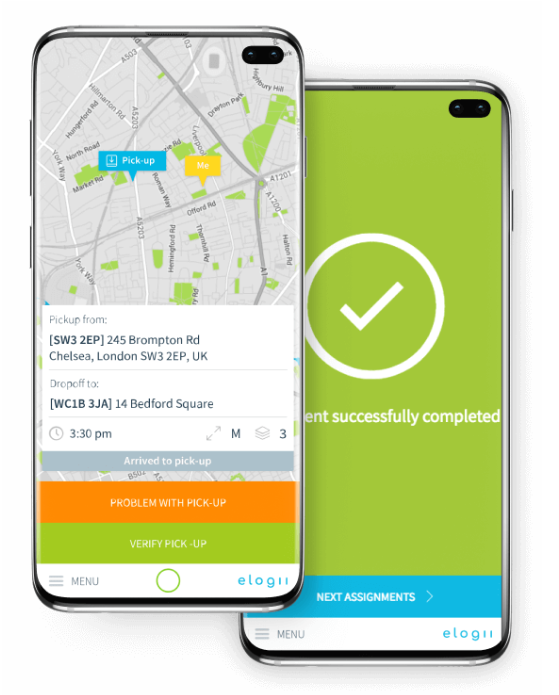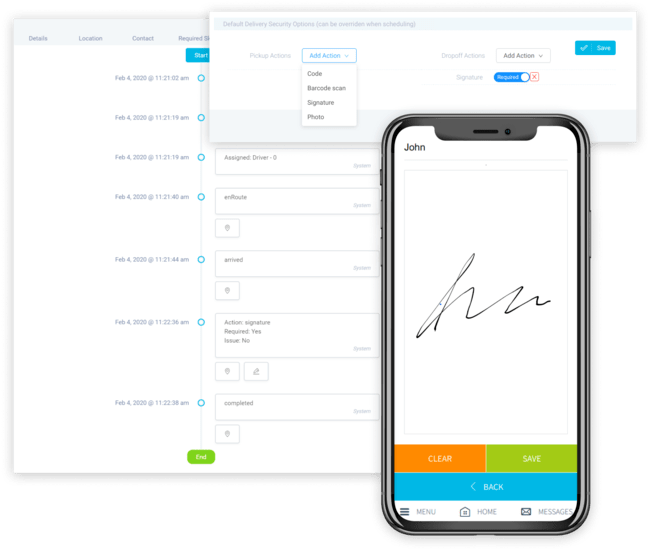Grocery Delivery Software: What Is It, How It Works + What to Look For
Learn what is grocery delivery software in this new guide. See how it works and how you can use it for both your grocery store and online grocery...
Home > Blog > Automated Last-Mile Delivery: What To Look For + What You Need to Do
Delivery LogisticsThere are plenty of automated last-mile delivery solutions on the market. But NOT all are equal: some offer more value & functionality than others.
There are plenty of automated last-mile delivery solutions on the market. But they’re not all equal: some offer far more valuable functionality than others that look similar at a first glance.
How do you choose the right one for your business then?
Well, that’s what we’re going to explore in this blog…
When we talk about automated last-mile delivery, we’re not talking about drones and robot cars.
Indeed, with Amazon Prime anticipating a per-package cost of $63/£48 for drone delivery by 2025, these solutions are best classified under “science fiction” for the time being…
What we’re talking about is technology to solve various aspects of the last-mile delivery problem.
And with last-mile - that is, delivery from the distribution centre to the final customer - constituting 53% of the total cost of shipping, it’s a problem that has a big impact on companies’ bottom lines.
Traditionally, this has been thought of as a variant on the classic Vehicle Routing Problem, which asks:
“What is the optimal set of routes for a fleet of vehicles to traverse in order to deliver to a given set of customers?”
However, there is far more to delivery management than just getting vehicles to destinations as quickly as possible, using as little fuel as possible, and travelling as short distances as possible.
For delivery businesses today, “optimal” includes a lot of other variables that affect operational efficiency - which an automated last-mile delivery solution needs to accommodate alongside route planning.
And efficiency is not the only consideration. Automated solutions need also to consider:
In the rest of this blog, we’ll unpack those three main areas where automated last-mile delivery solutions need (and please excuse the pun!) to deliver.
The Vehicle Routing Problem is, in fact, one of the most difficult types of problem to solve in computational science. Once a certain number of variables are included, the challenge of solving a VRP using “brute force” methods of working out every combination to find the best becomes unmanageable.
So most route optimisation software providers use a variety of heuristics and machine learning, alongside computation. That’s one of the reasons why different software tools come up with different ideal routes.
There are many route optimisation algorithms in commercial use and it’s hard to compare them as they are usually proprietary and always highly complex.
So, our guide to choosing the best automated last-mile delivery tools will focus largely on everything else that affects efficiency, rather than the algorithms themselves.
As we’ve said, route optimisation isn’t the whole of the efficiency question - but it’s a big part of it. Even the best despatcher will struggle to match route optimisation software for speed and accuracy in designing multi-stop delivery routes.
And on top of that, true efficiency depends on a lot of other factors as well:



If the VRP is complex for a single vehicle, then what is it when you’re trying to optimise for an entire fleet?
And once again, there are other factors to consider:

Automated last-mile delivery solutions also need to help you manage your driver workforce.
Minimising overtime, accounting for breaks, driver preferences, and skills, and territories should all be accounted for in designing optimal routes.
A driver with a damaged shoulder will struggle to unload heavy packages - these should be assigned to operatives who can manage the loads, for example, for the best operational efficiency.
But it’s also important for drivers to be able to feedback information from the field that can help improve performance.
Most tools do this via mobile apps, although some also use dedicated hardware - such as hard-wired GPS, OBD, and/or Electronic Logging Devices - as well.
Data of this kind may include notes on deliveries (eg about neighbours who are willing to take in packages when the customer is out), live communications with control, vehicle telemetry (eg time spent in/out of the vehicle), and more.

Finally, your solution should be able to collect data on driver performance and collate this into dashboards - so you can keep track of who is doing the best job.
Shipping impacts customers satisfaction, according to 98% of shoppers. And Customer satisfaction matters a lot:
So, the more your last-mile solution can standardise and improve the experience customers receive upon delivery, the better it will be for your business.
The days when most businesses could get away with giving customers an eight-hour drop-off window and then leave it up to them to rearrange delivery if they happened to miss it are over!
Customers expect deliveries to be convenient, and they expect to be kept informed of any change of plans - on their own terms.
Your route planning software should include the following as standard:
Some solutions charge extra for notifications (eg Route4Me) while others only offer a limited choice of channels (eg Onfleet can only provide text messages).
Proof of Delivery (POD) is a key part of any logistics operation. Businesses need to be able to verify and prove that their customers have received their orders.
This is another area where drivers’ mobile apps play an essential role in last-mile delivery automation - as these can allow POD data (geo-stamped and time-stamped to provide an audit trail that cannot be tampered with) to be sent directly from the field back to the system.

Most solutions support some basic types of POD collection - photograph, customer signature, etc - but these do not lend themselves to the wider supply chain improvements we’ll look at in the next section.
When choosing a software solution, select one that supports barcode scanning (or QR code scanning).
eLogii supports all of these POD collection methods, as well as cash on delivery confirmations.

If your business offers hyperlocal, fast-turnaround, on-demand delivery (eg fast food restaurants) you should be aware that many route optimisation platforms do not support this kind of activity - and some that do are not able to work with third-party logistics (3PL) drivers.
Delivery doesn’t exist in a vacuum. Last-mile is the final stage of the logistics process, and it should not be considered in isolation.
There are two types of solutions here:
The vast majority of route optimisation tools provide access to an API, but it’s important to note:

That’s quite a lot to bear in mind when weighing up the automated last-mile delivery options:
Fortunately, there’s one software service that ticks all of these boxes…
Learn what is grocery delivery software in this new guide. See how it works and how you can use it for both your grocery store and online grocery...
Find out what is middle mile logistics, why it’s important for delivery, how it affects the first and last mile and how to optimize it for more...
Want to give a GREAT delivery experience to your customers? In this post, learn what makes a good delivery great, and take actionable steps to do it.
Be the first to know when new articles are released. eLogii has a market-leading blog and resources centre designed specifically to help business across countless distribution and field-services sub sectors worldwide to succeed with actionable content and tips.
